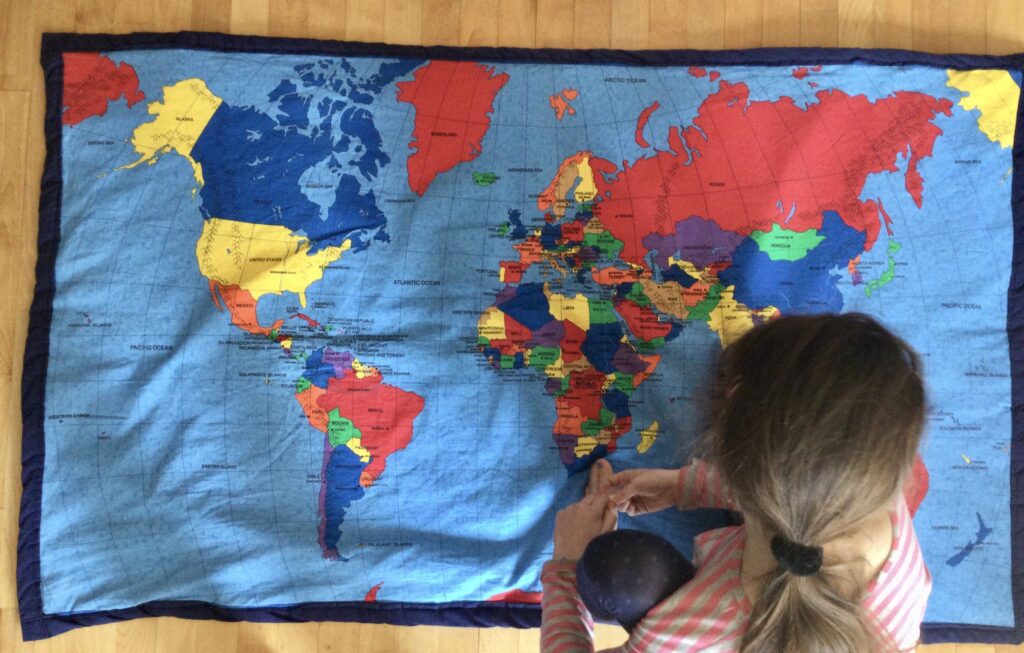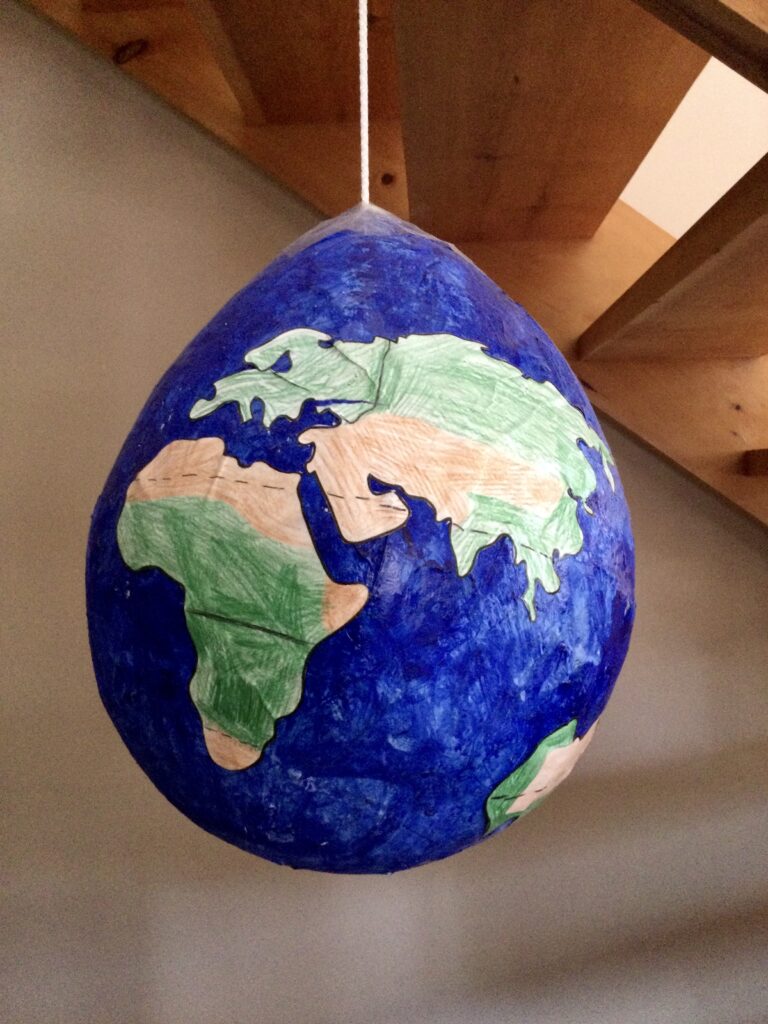With Earth Hour and Earth Day coming up I wanted to share this a fun, tactile, integrated geography and art project we did last spring. It is also a bit messy – we did the messy bit outside in the sun.
We began by making a paper mache balloon using the first of the following recipes and scrap computer paper ripped up (easier to paint afterword, and we don’t receive any newspapers).
Recipe #1: One part flour to five parts water. Boil for 2-3 minutes, stirring and let cool.
Recipe #2: One part flour and one part water. Stir.
*You can add a couple of tablespoons of salt to prevent molding.
We let it dried and then my daughter painted it blue.
We reviewed that a continent is a large landmass and that there are seven recognized continents. Song is super helpful as a memory aid so we learned the chorus of this Hopscotch 7 Continents Song.
To reinforce and evaluate the learning we looked at our blanket map, globe, used the felt board, and did a puzzle.


Back to the paper mache globe…I printed out the continents available here and my daughter cut them out. Then using google maps she coloured the deserts brown, the vegetated areas green, and left the ice and snow covered areas white.

Lastly, we worked together to place the continents in place using modge podge.



Book pairings:
Because you are my Teacher by Sherry North and Marcellus Hall
Over on a Mountain. Somewhere in the World by Marianne Berkes and Jill Dubin
Solving the Puzzle Under the Sea by Robert Burleigh and Raúl Colón
Atlas of Adventures by Rachel Williams and Lucy Letherland
How to Make an Apple Pie and See the World by Marjorie Priceman
How Far do you Love Me? by Lulu Delacre
Extension:
Get outside!!
Have a Planet Earth, Planet Earth II, Blue Planet or Blue Planet II movie night (all available via BBC Earth).
Curricula fit (as of 2021):
Ontario Grade 2 Social Studies
Some extra learning notes:
Earth
- ~4.5 billion years old
- formed from particles created from the creation of the sun pulled together by gravity
- a solid inner core, a liquid outer core, a silicate mantle and a rocky crust
BIOMES (distinct biological communities that have formed in response to a shared physical climate:)
Aquatic
- about 75% of Earth’s surface is water-covered
- freshwater & marine
- scientists estimate that the ocean is 99% of the world’s biosphere (spaces and places where animals live)
- although it is really one big ocean, there are five recognized ocean basins: Pacific, Atlantic, Indian, Arctic and Southern
- ocean covers the longest mountain range and the deepest canyon
Desert
- arid lands and sparse vegetation
- receive 20cm or less of rainfall/year
- around 30° north and south of the equator, the interior of continents, and in the rain shadows of large mountain belts
- there is dessert on every continent, some hot and some cold
- Antarctica is the largest and driest desert
Tundra
- polar and alpine
- long, cold winters and short summers
- no trees
- permafrost
Tropical Rainforest
- thickly vegetated lands
- warm weather and rain all year
- occurs around the equator
Taiga/Boreal
- largest land biome
- experiences long winters and short summers, plenty of snow
- many coniferous trees
Temperate Forest
- experience 4 seasons: winter, spring, summer and fall
- deciduous and coniferous trees
Grasslands
- lots of grass and few trees
- large grazing mammals
Savannah
- trees, shrubland, grasses
- many large animals and animal migrations
- wet and dry seasons
- warm temperatures all year
My more advance notes:

We had fun and got messy, and I brushed up on my learning too.
Stay curious, Kate
